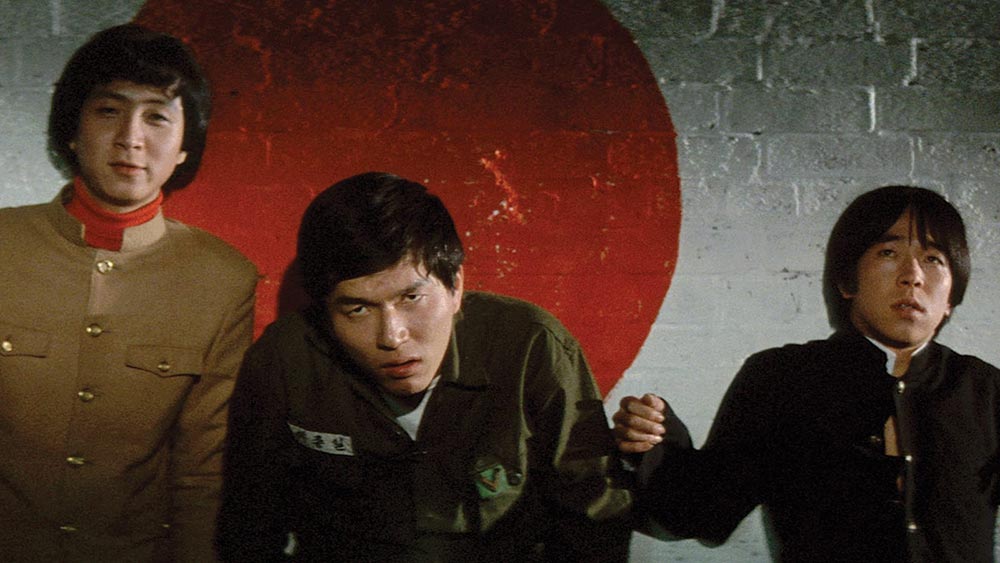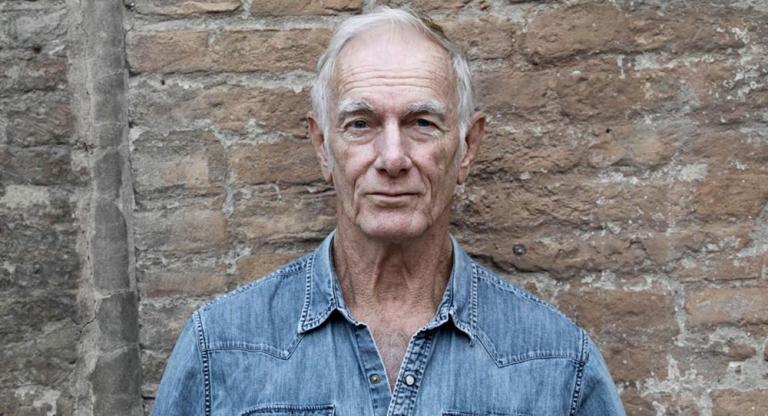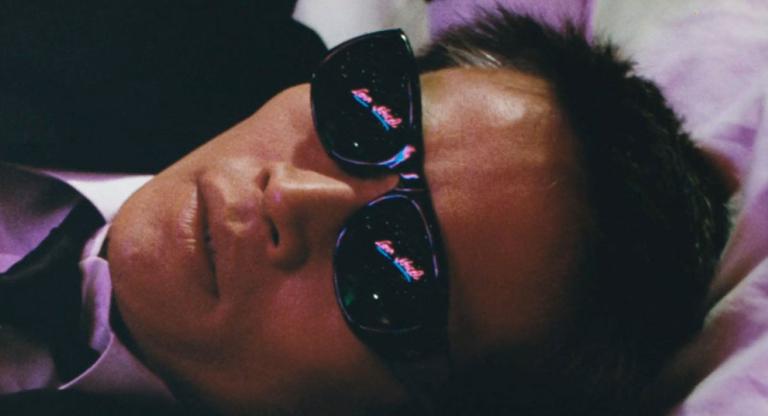Nagisa Oshima’s Three Resurrected Drunkards (1968) stars musical trio The Folk Crusaders as clueless youths mixed up in a madcap world of juvenile crime and Cold War militarism. The film features a grating, yet somehow catchy, theme song that is repeatedly played throughout, setting viewers up for a high dose of bumbling summertime mishaps with highschool students Onoppo (Katō Kazuhiko), Chu-noppo (Kitayama Osamu) and Chibi (Hashida Norihiko). As the three teens frolic by the ocean in the opening scene, South Korean draft dodgers Yi Cheonil (Kei Satô) and Kim Hwa (Cha Dei-dang), burrowed under the sandy beach, snatch their belongings. The boys return to shore to find that in lieu of their Japanese school attire, all that’s left is a Republic of Korea (ROK) corporal’s outfit, a student’s uniform, and ¥500 per article stolen. Car chases, locomotive stand-offs and identity-swapping mayhem ensue as the three students desperately try to evade capture—both from the authorities, who seek to deport them, and their Korean imposters, who want to kill them in order to ensure their ploy is never revealed. Like his international contemporaries, particularly Luis Buñuel and Jean-Luc Godard, Oshima’s avant-pop comedy embodies the revolutionary character of its time period by detailing the youth culture that popularized it; it is a film that is uncompromising in its formal experimentation and its scathing political critique.
Oshima’s oeuvre in the ‘60s was largely influenced by two major shifts in his career: his departure from the major production studio Shochiku, after the controversial release of Night and Fog in Japan (1960), and his travels to Korea and Vietnam. On one hand, his separation from the traditional studio system marked an increased deviation from realism and even bolder explorations of taboo desires in his homeland. Mirroring the decade of student protests and militant activism in Japan, works like Violence at Noon (1966) and Japanese Summer: Double Suicide (1967) express the explosive desires of a generation pent up with rage and a yearning to overthrow rigid political structures. On the other, perhaps more significantly, Oshima’s travels to postwar Seoul and wartime Saigon helped broaden Oshima’s artistic focus. Instead of solely addressing domestic issues, Three Resurrected Drunkards contextualizes Japanese experiences within the nation’s history of colonial expansion and present global struggles against imperialism.
Oshima employs absurd comedic set pieces throughout, like a Vietnam War dream sequence where the trio clumsily dodge explosions and shoot fake Tommy guns with no enemies in sight, to deconstruct Japanese society’s complicity and outright participation in perpetuating discrimination and violence throughout Northeast Asia. The protagonists, who are initially mistaken for Korean convicts and decide to embrace their new identity, highlight both the endemic Anti-Korean racism ingrained in Japanese society against their former colonial subjects and, conversely, a sense of kinship. Forced to live like fugitives, constantly under suspicion and relentlessly hunted by the law, the band of teenagers come to understand the harsh and dispossessed existence of being Korean in Japan—a similar fate shared by many young radicals in the ‘60s. Just like the subversive student activists in Oshima’s earlier works, the Koreans in Three Resurrected Drunkards find themselves in opposition to a U.S. backed military regime—one hellbent on stamping out dissent and establishing autocratic hegemony.
Some of the film’s most enduring images are Oshima’s recreations of the infamous Saigon Execution photograph by Eddie Adams. Taken and widely circulated months before the film’s release, the snapshot of an ARVN brigadier general shooting a Viet Cong insurgent in the head at point blank range repeatedly surfaces in different forms. Oshima has his actors pose in the same position, mimicking the pained facial expression of the victim, and at the end of the film, he has the three main characters sitting in a train carriage as they watch a looping sequence of the re-enacted execution. Replaying the murderous act over and over, with giant multicolored paintings of the image blown up on the backdrop, Oshima gets at the harrowing human toll of U.S. military conquests in Asia, as well as the role global media outlets play in dispensing such traumatic images. The Japan in Oshima’s cinema is not merely a secluded chain of islands, but rather one embedded in an all-consuming wave of international political instability.
Three Resurrected Drunkards screens this evening, August 12, at BAM as part of the series “Passing You By: Impostorism on Film.”



